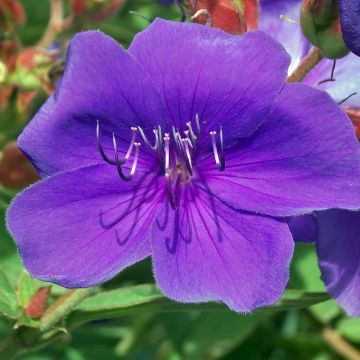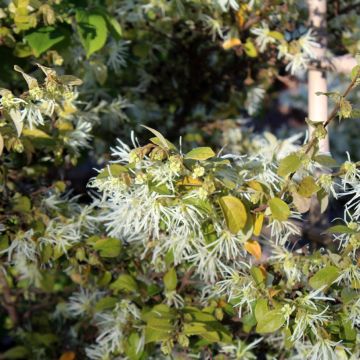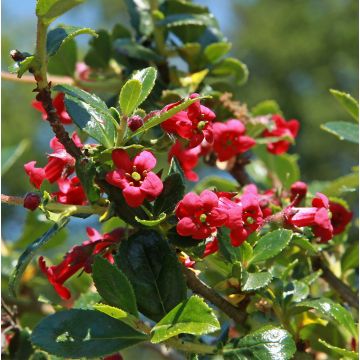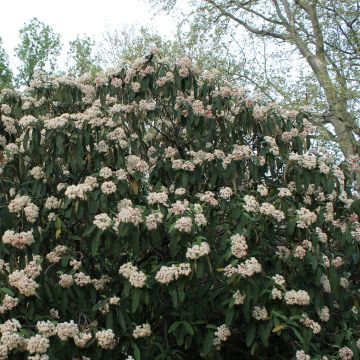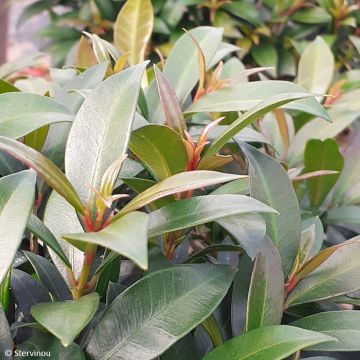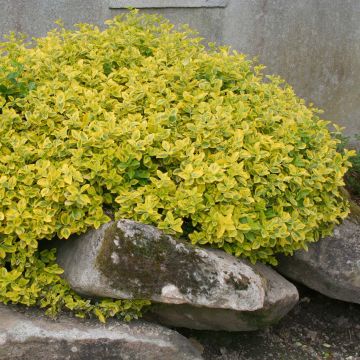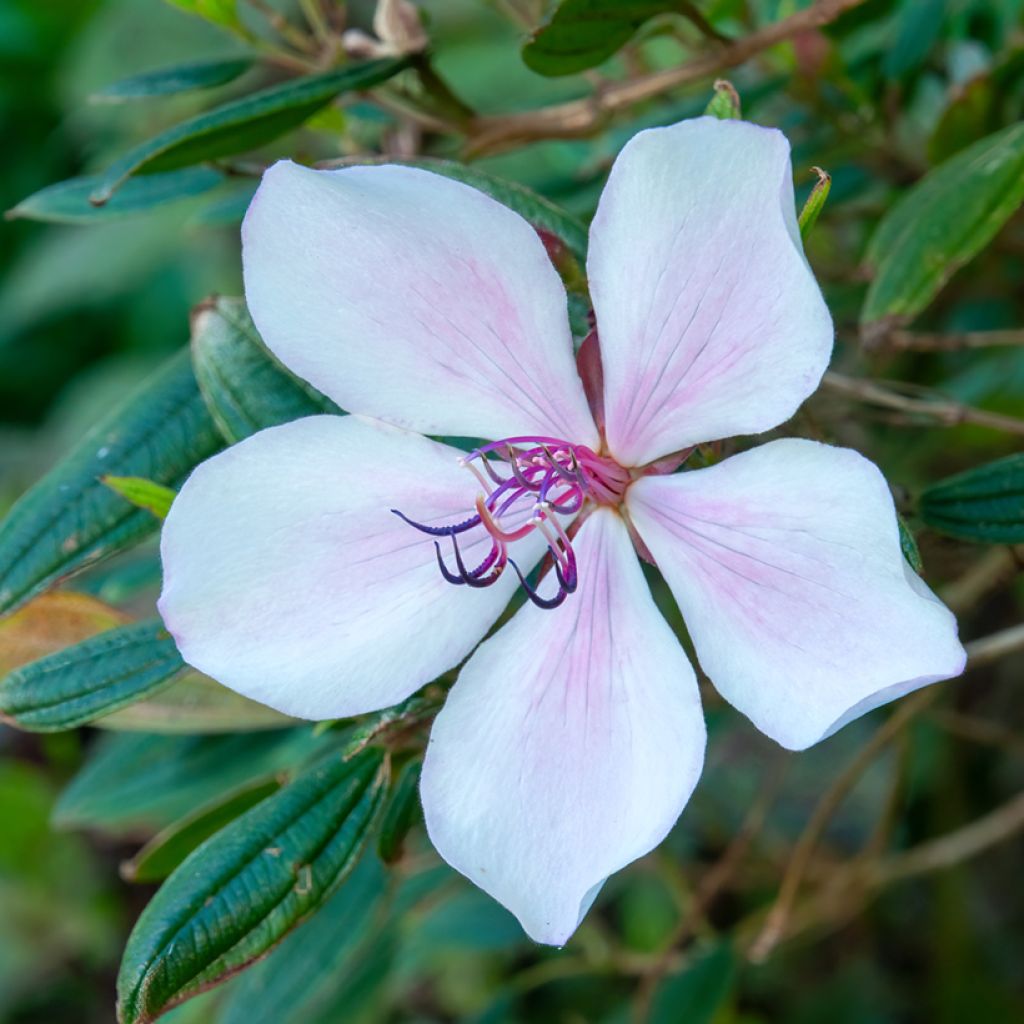

Tibouchina Peace Baby - Glory bush
Tibouchina Peace Baby - Glory bush
Tibouchina urvilleana x mutabilis Peace Baby 'COV'
Glory Bush, Princess Flower, Lasiandra
This item cannot be shipped to the selected country
Delivery charge from €5.90
More information
Schedule delivery date,
and select date in basket
This plant carries a 24 months recovery warranty
More information
We guarantee the quality of our plants for a full growing cycle, and will replace at our expense any plant that fails to recover under normal climatic and planting conditions.
From €5.90 for pickup delivery and €6.90 for home delivery
Express home delivery from €8.90.
Does this plant fit my garden?
Set up your Plantfit profile →
Description
Tibouchina urvilleana 'Peace Baby' is a wonderful compact white-flowered variety of a tropical bush called "spider flower". It is a tender variety, very floriferous from autumn to winter, ideal for adding an exotic touch to the terrace or garden in a mild climate. Its small size is particularly suitable for pot cultivation, allowing easy sheltering during winter in the conservatory where it will continue to bloom.
Belonging to the Melastomataceae family, Tibouchina urvilleana 'Peace Baby' is a cultivar obtained in France by Pépinière Kerisnel. The plant is a result of cross-breeding with Tibouchina mutabilis, featuring short internodes and more numerous branching. This dwarf and bushy selection reaches about 60 cm in height and width in a pot, forming a dense bush with an upright habit. Its evergreen leaves are opposite on the stems, lanceolate and measure approximately 10 cm long. They are dark green with silvery highlights, covered with a fine down, and have well-marked veins giving them a puckered appearance. From October to December-January, the 5 to 8 cm wide white flowers adorn the bush, composed of five satin petals and prominent curved pink stamens. The bright red flower buds add a beautiful touch of colour before the flowers open and mingle with the white corollas on the plant. This spectacular flowering is devoid of fragrance.
Tibouchina 'Peace Baby' looks stunning in a pot on a terrace or balcony. It can be grown in the ground only in regions where frosts are very rare and mild. It also makes a beautiful conservatory or indoor plant in a bright, cool room. To create a harmonious ensemble, for instance, pair it with Abutilon 'Suntense' with purple flowers, Fuchsia magellanica 'Riccartonii' with tubular purple and red flowers, Solanum rantonnetii 'Charles Pink Star' with pink flowers, and Plumbago auriculata with sky blue flowers. These combinations will offer a varied colour palette throughout the season.
Report an error about the product description
Plant habit
Flowering
Foliage
Botanical data
Tibouchina
urvilleana x mutabilis
Peace Baby 'COV'
Melastomataceae
Glory Bush, Princess Flower, Lasiandra
Cultivar or hybrid
Other Tibouchina
Planting and care
Plant Tibouchina 'Peace Baby' in open ground in the mildest regions, in a sheltered spot from wind and frost, or in a pot elsewhere. Planting in spring allows you to witness their wonderful flowering from the first summer. These bushes require a very bright, but semi-shaded exposure, and they dislike direct, scorching midday or afternoon sun. They appreciate deep, light, fertile, well-drained soil, kept moist throughout the flowering period. Avoid watering with hard water. As winter corresponds to a resting period in our climates, the soil or planting substrate should be kept just moist, never wet or waterlogged. A mixture composed of leaf compost, compost, light garden soil (low in limestone), loam, and a little peat (not more than 30%) seems suitable. An application of organic fertiliser is recommended in pots, first in spring (April) and a second time in early summer.
Pruning is not essential for the naturally compact and branching Peace Baby variety. If necessary, it should be done after the main flowering.
In a greenhouse, conservatory, or indoors, watch out for pests such as scale insects, whiteflies, and red spider mites, which particularly enjoy warm, confined, and dry atmospheres.
Planting period
Intended location
Care
This item has not been reviewed yet - be the first to leave a review about it.
Evergreen shrubs
Haven't found what you were looking for?
Hardiness is the lowest winter temperature a plant can endure without suffering serious damage or even dying. However, hardiness is affected by location (a sheltered area, such as a patio), protection (winter cover) and soil type (hardiness is improved by well-drained soil).

Photo Sharing Terms & Conditions
In order to encourage gardeners to interact and share their experiences, Promesse de fleurs offers various media enabling content to be uploaded onto its Site - in particular via the ‘Photo sharing’ module.
The User agrees to refrain from:
- Posting any content that is illegal, prejudicial, insulting, racist, inciteful to hatred, revisionist, contrary to public decency, that infringes on privacy or on the privacy rights of third parties, in particular the publicity rights of persons and goods, intellectual property rights, or the right to privacy.
- Submitting content on behalf of a third party;
- Impersonate the identity of a third party and/or publish any personal information about a third party;
In general, the User undertakes to refrain from any unethical behaviour.
All Content (in particular text, comments, files, images, photos, videos, creative works, etc.), which may be subject to property or intellectual property rights, image or other private rights, shall remain the property of the User, subject to the limited rights granted by the terms of the licence granted by Promesse de fleurs as stated below. Users are at liberty to publish or not to publish such Content on the Site, notably via the ‘Photo Sharing’ facility, and accept that this Content shall be made public and freely accessible, notably on the Internet.
Users further acknowledge, undertake to have ,and guarantee that they hold all necessary rights and permissions to publish such material on the Site, in particular with regard to the legislation in force pertaining to any privacy, property, intellectual property, image, or contractual rights, or rights of any other nature. By publishing such Content on the Site, Users acknowledge accepting full liability as publishers of the Content within the meaning of the law, and grant Promesse de fleurs, free of charge, an inclusive, worldwide licence for the said Content for the entire duration of its publication, including all reproduction, representation, up/downloading, displaying, performing, transmission, and storage rights.
Users also grant permission for their name to be linked to the Content and accept that this link may not always be made available.
By engaging in posting material, Users consent to their Content becoming automatically accessible on the Internet, in particular on other sites and/or blogs and/or web pages of the Promesse de fleurs site, including in particular social pages and the Promesse de fleurs catalogue.
Users may secure the removal of entrusted content free of charge by issuing a simple request via our contact form.
The flowering period indicated on our website applies to countries and regions located in USDA zone 8 (France, the United Kingdom, Ireland, the Netherlands, etc.)
It will vary according to where you live:
- In zones 9 to 10 (Italy, Spain, Greece, etc.), flowering will occur about 2 to 4 weeks earlier.
- In zones 6 to 7 (Germany, Poland, Slovenia, and lower mountainous regions), flowering will be delayed by 2 to 3 weeks.
- In zone 5 (Central Europe, Scandinavia), blooming will be delayed by 3 to 5 weeks.
In temperate climates, pruning of spring-flowering shrubs (forsythia, spireas, etc.) should be done just after flowering.
Pruning of summer-flowering shrubs (Indian Lilac, Perovskia, etc.) can be done in winter or spring.
In cold regions as well as with frost-sensitive plants, avoid pruning too early when severe frosts may still occur.
The planting period indicated on our website applies to countries and regions located in USDA zone 8 (France, United Kingdom, Ireland, Netherlands).
It will vary according to where you live:
- In Mediterranean zones (Marseille, Madrid, Milan, etc.), autumn and winter are the best planting periods.
- In continental zones (Strasbourg, Munich, Vienna, etc.), delay planting by 2 to 3 weeks in spring and bring it forward by 2 to 4 weeks in autumn.
- In mountainous regions (the Alps, Pyrenees, Carpathians, etc.), it is best to plant in late spring (May-June) or late summer (August-September).
The harvesting period indicated on our website applies to countries and regions in USDA zone 8 (France, England, Ireland, the Netherlands).
In colder areas (Scandinavia, Poland, Austria...) fruit and vegetable harvests are likely to be delayed by 3-4 weeks.
In warmer areas (Italy, Spain, Greece, etc.), harvesting will probably take place earlier, depending on weather conditions.
The sowing periods indicated on our website apply to countries and regions within USDA Zone 8 (France, UK, Ireland, Netherlands).
In colder areas (Scandinavia, Poland, Austria...), delay any outdoor sowing by 3-4 weeks, or sow under glass.
In warmer climes (Italy, Spain, Greece, etc.), bring outdoor sowing forward by a few weeks.

































